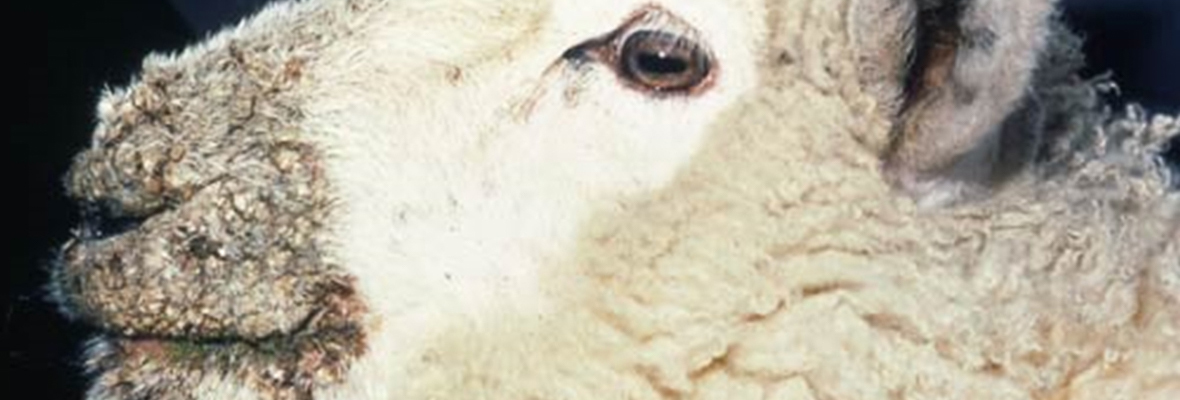
The old adage ‘prevention is better than cure’ rings very true when it comes to scabby mouth. Scabby mouth (or orf, contagious pustular dermatitis, contagious ecthyma) is a highly contagious poxvirus affecting sheep and goats, and it is also transmissible to humans and dogs. The virus can survive in the environment for over a year and there is no cure for the lesions caused.
Infection occurs through direct contact with the virus, and grazing of coarse pastures and thistles may increase susceptibility due to the invasion of the virus through oral abrasions. Outbreaks are most common during spring and early summer, although they can be seen at any time of the year. Scabby mouth mainly occurs in young stock, with some flocks seeing infection rates of over 90%. The virus causes painful lesions predominantly, around the lips and mouth, but they can cover the whole face. Lesions can also be seen on feet, and the udders of lactating ewes.
While deaths are uncommon, the virus can have huge effects on production due to poor growth rates from loss of suckling and grazing. The lesions caused will normally clear within two to three weeks, but, if secondary bacterial infection is involved, then healing time can be much longer. Careful handling of infected animals is important to prevent human infection – wear gloves and long sleeves to prevent skin to scab contact. It is also advisable to minimize the use of dogs with infected sheep. In most scabby mouth outbreaks, it is hard to stop the spread through the flock, but taking the sheep off coarse pastures and grubbing thistles can certainly help.
As mentioned, there is no cure for scabby mouth, so the focus should be on prevention by vaccination. The vaccination is a ‘live vaccine’, therefore it is important to use it only on properties that have identified carriers of the disease. Vaccinated animals will have a long duration of immunity, and exposure from virus on farm will boost immunity in older animals. The recommendation is to vaccinate each year’s crop of lambs at tailing time.
Two live vaccinations are available, and both have similar application techniques. Application is by scratching firmly across the skin, usually on the inside of the thigh where there is little wool coverage. It is important to scratch and not cut – if you go too deep then the vaccination will not hold. No blood should be drawn during the process, and a scab should form at the vaccination site within a week. Care should be taken to keep applicators clean, as they can often get clogged with dirt and grease and then deliver incorrect vaccine doses. Avoiding self-injection (as ever) is particularly important because it is a live vaccine and can therefore cause human infection. Unlike other vaccines, you can check the vaccine has worked – round up ten lambs ten days post vaccination to make sure a good scab has formed at the vaccination site.
Should you have any queries around scabby mouth and vaccination use, please get in touch with your local Vetlife team.